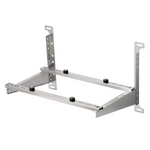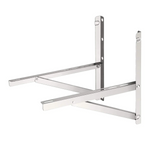TOSOT is making an important change in how we build our air conditioning systems. Beginning later this year, we will be transitioning away from R-410A refrigerant and moving toward R-32, a next-generation refrigerant that offers superior environmental and performance benefits. This switch is part of our commitment to sustainable innovation, improved efficiency, and full compliance with upcoming regulatory requirements.
Why We’re Moving Away from R-410A
R-410A has been a common refrigerant in residential and commercial HVAC systems for over two decades. It replaced older, ozone-depleting refrigerants like R-22, and while it does not damage the ozone layer, it does have a high Global Warming Potential (GWP). R-410A’s GWP is about 2,088, meaning it contributes significantly to greenhouse gas emissions if released into the atmosphere.
As environmental policies and refrigerant regulations evolve, manufacturers are expected to reduce the GWP of their products. The transition to low-GWP refrigerants is already being mandated in many countries and U.S. states. By proactively moving to R-32, TOSOT is getting ahead of the curve, helping our customers prepare for future compliance while also reducing our carbon footprint.
What Makes R-32 a Better Refrigerant?

R-32 is a single-component refrigerant with a GWP of approximately 675—about one-third the GWP of R-410A. That reduction alone makes it significantly more environmentally friendly, but R-32 also offers performance improvements that benefit both consumers and system manufacturers.
- Higher Efficiency: R-32 absorbs and releases heat more effectively than R-410A. This allows systems to use less refrigerant overall while achieving the same (or better) cooling capacity.
- Lower Refrigerant Charge: Because it is more efficient, R-32 systems typically require 10 to 30 percent less refrigerant than R-410A systems for the same performance output.
- Easier to Recycle and Reclaim: As a single-component refrigerant, R-32 is easier to clean, recover, and reuse compared to R-410A, which is a blend of refrigerants.
All of these factors contribute to reduced energy consumption, lower greenhouse gas emissions, and ultimately, lower operating costs for the end user.
Do R32 Models Match Up With the R410A Models?
While R-32 offers numerous benefits, it’s important to note that R-32 is not a drop-in replacement for R-410A. The two refrigerants operate at different pressures and require different lubricants, making them incompatible with each other’s system components. This means that R-32 cannot be used in an existing R-410A system, and vice versa.
For customers looking to upgrade to R-32, a new system specifically designed for R-32 is required to ensure safety, efficiency, and long-term reliability.
What Are the Safety Considerations?
While R-32 offers clear environmental and performance benefits, it also comes with important safety considerations that must be addressed in the design and installation of HVAC systems.
R-32 is classified as an A2L refrigerant under ASHRAE standards, meaning it is mildly flammable. It is not explosive, and its flammability is low and difficult to ignite under normal conditions, but it still requires additional safety measures that are not necessary with R-410A, which is non-flammable (A1 classification).
When Is a Leak Sensor Required?
The primary safety measure that comes into play with R-32 is the use of a refrigerant leak detection sensor. These sensors are required when a system contains a refrigerant charge above a certain threshold and is installed in an enclosed or occupied space.
Based on international and U.S. safety standards, such as UL 60335-2-40 and IEC 60335-2-40, a leak detection sensor is required when the amount of R-32 refrigerant in the system exceeds a calculated limit based on room size, ventilation, and refrigerant properties. As a general reference, for many residential applications, this limit translates to around 2.2 pounds (approximately 1 kilogram) of refrigerant. Above that threshold, the unit must include an automatic sensor that can detect the presence of leaking refrigerant at a low concentration.
These sensors are designed to monitor air quality continuously. If a leak is detected and the concentration of R-32 approaches even 25 percent of its lower flammability limit (LFL), the sensor can trigger an automatic response. This could include shutting off the system or activating ventilation fans to dilute the refrigerant concentration and maintain a safe environment.
Built-in Safety Measures in TOSOT Systems
As we begin rolling out R-32 models, TOSOT will incorporate these safety systems wherever required. If a particular model exceeds the refrigerant charge threshold, it will be factory-equipped with a calibrated leak detection sensor that meets the applicable UL and IEC safety standards. These sensors are integrated into the system's controls and designed to operate reliably in a wide range of temperatures and humidity levels.
Specifically, for lower refrigerant models like 9,000 BTU and 12,000 BTU units, a refrigerant leak sensor is not required. For larger capacities like 36,000 BTU and multizone units, all of our units are equipped with R32 leakage sensors. These sensors are installed in the indoor unit at our factory and operate automatically without manual setup. When a leak is detected, error code F0 typically appears to alert you.
In addition to leak sensors, our new systems are also designed with:
- Refrigerant charge limits based on room size and ventilation
- Self-diagnostic and fail-safe functions, including auto shutdown and error notification via remote control or app
-
Technical documentation to ensure safe installation and maintenance practices
All of this ensures that while R-32 may require new precautions, it can be used safely and effectively in both residential and commercial environments.
What If I Am Using A R410A Model?
For most customers, the change to R-32 will be seamless. Systems with a refrigerant charge below the safety threshold will not require leak sensors and will function similarly to their R-410A predecessors, only with higher efficiency and lower environmental impact.
For customers still using R410A models, everything will continue to work perfectly fine. Your machine will function well. While R-410A models will remain fully supported, new R-32 models are the better long-term investment for energy savings and environmental compliance.
This transition also means you’ll be receiving a system that’s aligned with future regulations, potentially qualifying for incentives or rebates where local programs support low-GWP refrigerant adoption.
Looking Ahead
TOSOT’s switch from R-410A to R-32 is more than a product update; it’s a forward-looking investment in performance, safety, and sustainability. We are building these systems to meet the highest international standards while delivering the reliable comfort you expect.
Most of our residential and multi-zone models are now shipping with R-32 refrigerant, with only a few remaining R-410A models still in stock. This phased transition allows customers to continue choosing the product that best fits their needs today, while positioning themselves for long-term energy and environmental benefits.
If you have questions about the transition, installation requirements, or what it means for your next HVAC purchase, feel free to reach out to us at support@tosotdirect.com. We're here to help guide you through this important and positive change.





